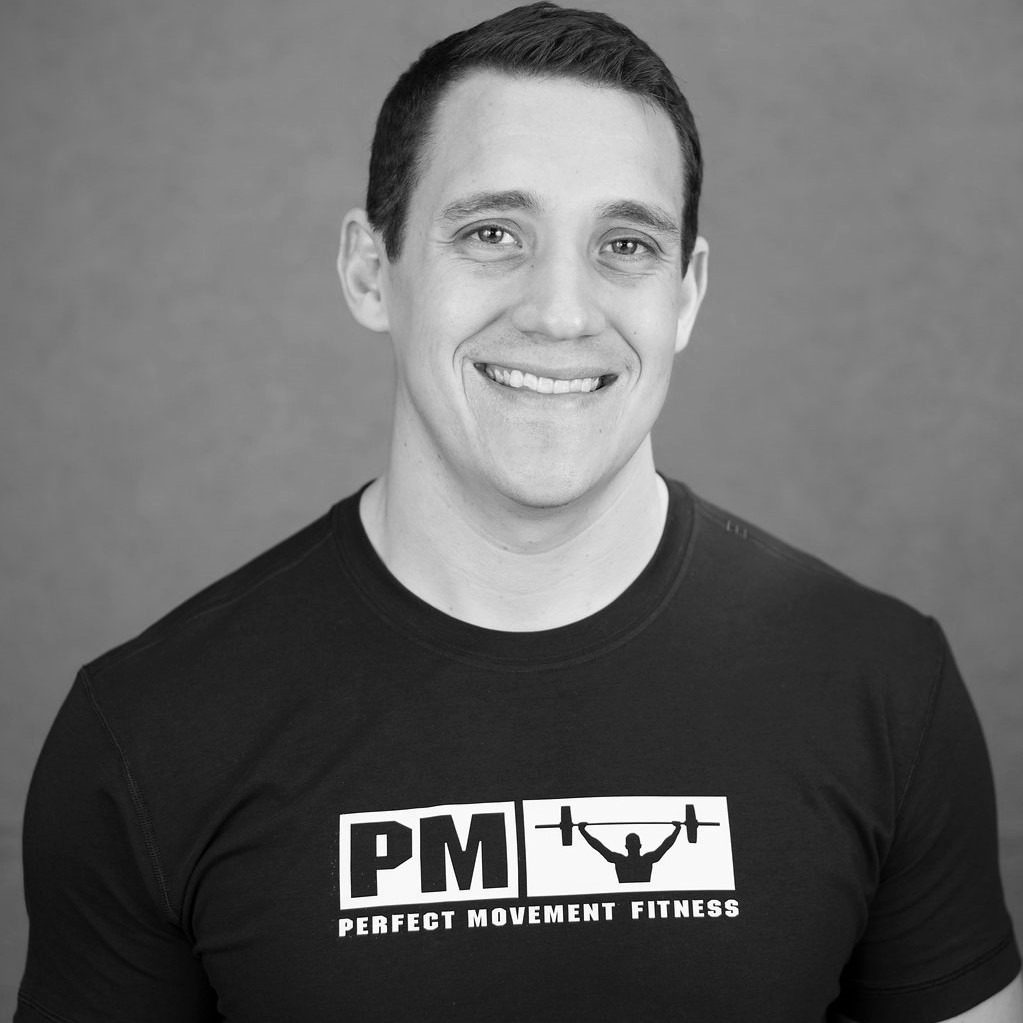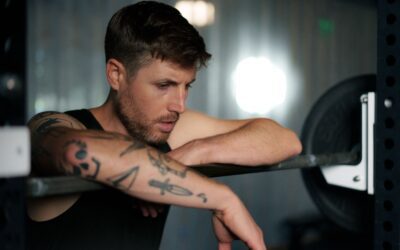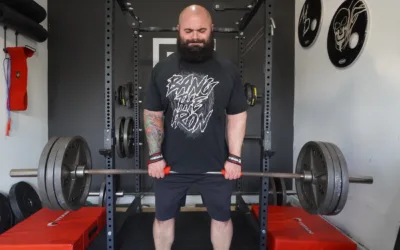A Beginner’s Guide to Steel Mace Training
TOPIC: Strength & Conditioning
Think you’ve mastered kettlebells? Meet the steel mace — the brutal, offset weapon that forces your body into three-dimensional stability, grip work, and rotational strength. Ancient tool. Modern performance.

Written By
jesse grund
Jesse Grund’s passion is simple: coach men and women to their optimum physical potential and to places they never expected they could take their body. He is the proud owner of Unconventional Strength, an elite personal training studio in Orlando, FL where he and his fellow coaches train everyone from post-rehabilitation clients to world champion athletes.
Insta
Website
The Steel Mace Training Beginner’s Guide
Remember the way that the Scottish rebels got creative with their weaponry in Braveheart?
William Wallace used an elk horn, a flail, and a claymore, Hamish’s dad preferred an axe, and their Irish buddy Steven liked to throw a knife. Brilliant. When you walk into a gym these days, you might not be assailed by a vengeful Scotsman wearing blue face paint, but you may well see a similar array of metal objects that can do some serious damage.
There are the obligatory kettle bells, of course, and also clubs, hammers, and steel maces.
While I’m pretty well versed in StrongFirst’s methodology with the first item on this list, the others are a source of mystery. Which is code for saying, “I have no bloody idea how to use them.”
We’ll get to clubs and hammers in future posts, but for this one, we hit up our friend Jesse Grund. In addition to being a TRX black and yellow rank (their most senior coaches) instructor, Jesse also trains athletes with all of the modalities just mentioned at Unconventional Strength in Orlando, Florida.
Jesse patiently answered my newbie questions and shot the videos below to walk you through your first mace workout. With the required Braveheart cry of “Freedom!” let’s begin.
Benefits of Training With a Steel Mace
First, it’s an optimizer of the human movement system. Mace training will make you a better mover without it’s not confining you to a fixed space or predetermined range of motion.
Second, it’s an offset load with 80 to 90 percent of the weight in the head. You’re also constantly having to resist rotation, which creates greater core engagement.
Yes, you’re moving an object, but your body also has to maintain a certain rigidity to manage the force depending on where the mace is in space. As the mace moves away from your midline, you have to work harder to keep it under control.
The third benefit is grip strength as most steel maces have a wide handle, One of the first things most people find when they start working with the push-pull dynamics is, “Wow, my forearms and hands are on fire.”
We know that grip strength is a key predictor for physical vitality later in life. With a mace, you don’t need separate exercises to work on your grip, because it’s a component of what you’re already doing.
What Weight Should I Start With?
I always tell everyone to start with a 10-pound mace. For women, either that or a 7-pounder, because the handle is a little narrower. I know some people might say, “I’m strong enough to handle a heavier weight.” But I’d reply that you’ve never worked with this piece of equipment or handling an offset load on a long lever.
When your hands are gripping the bottom of the handle and you’re trying to swing the mace, it’s going to feel a lot heavier than 10 pounds. So learn how to manage that force, activate the right muscles to provide both motion and stability, and master the push-pull dynamics of the basic exercises. Then think about going up in weight when you’re ready.
Steel Mace Training Books and Courses
Erik “Esik” Melland’s book [with Robinson Erhardt], Viking Ninja Elements, is a useful resource. Erik is doing for mace training what Pavel did for kettlebells – fusing science and practical applications. Mace flowing has become a thing, but to me that’s a gimmick.
Esik approaches it from a strength and conditioning standpoint, which is beneficial for most people. Also check out Viking Ninja’s educational resources. They put out a lot of free information.
Steel Mace Exercises for Beginners
The first exercise I teach everybody is passing. This is exactly what it sounds like – passing the mace from side to side. What I want you to do is pass the mace in front of your face from side to side, and then learn the different landmarks it has to hit when it does that. That is the basis of everything we do with the mace.
Then it’s onto the 360 or halo. To me, it’s the equivalent of the Turkish get-up with a kettlebell. There’s a lot going on in the 360, and being able to learn that in the beginning is the most important thing you can do. Then we work on the uppercut, which is also known as the battle position, which involves mastering rotation.
Each of these three exercises requires a different grip. You’re learning to rotate and resist rotation. These are the foundations of mace training.
What’s Next?
When they demonstrate proficiency in those, then we can add in some lower body exercises. It’s really simple to add a squat to the switch or the pass, and to add a lunge to the uppercut or battle position.
Once someone has a solid base with the three foundational movements, they can move and manage the mace as it moves through three-dimensional space with control. Now you can test their movement literacy by changing the conditions. Throwing in a lower body exercise is a good way to achieve this.
Find Your Perfect Training Plan
Sometimes all you need to reach your destination on your fitness journey is an expert guide. Look no further, we've got you covered. Browse from thousands of programs for any goal and every type of athlete.
Try any programming subscription FREE for 7 days!
Related Articles
You May Also Like...
What Is the RPE Scale and How Do We Use It?
If you’re familiar with strength training, you’ve probably heard someone say… Go until it feels tough! PUSH HARDER! …but what does this really mean? How is it possible to quantify words like “tough” or “hard?” How do you know when a set is heavy enough to produce...
Winter Warfare: How to Bulk Up This Season
It’s that time of the year to wreak havoc and prepare for a massive winter bulk! But wait, what is a winter bulk? What does it take, and how do we achieve it? Joseph Lucero (CSCS), owner of Harvesting Strength, is a powerlifter and strongman coach with years of...
How to Do Preacher Curls for Bigger Biceps
Who doesn’t love hitting a good biceps workout and feeling that skin-splitting pump? The preacher curl is a great exercise for bulking up your biceps, but using the EZ bar isn’t the best option for everyone. To build juicy biceps without pissing off your elbow joint,...
What Is the RPE Scale and How Do We Use It?
If you’re familiar with strength training, you’ve probably heard someone say… Go until it feels tough! PUSH HARDER! …but what does this really mean? How is it possible to quantify words like “tough” or “hard?” How do you know when a set is heavy enough to produce...
Winter Warfare: How to Bulk Up This Season
It’s that time of the year to wreak havoc and prepare for a massive winter bulk! But wait, what is a winter bulk? What does it take, and how do we achieve it? Joseph Lucero (CSCS), owner of Harvesting Strength, is a powerlifter and strongman coach with years of...

Want more training content?
Subscribe
For Coaches
For Athletes
About
Support
Training Lab
Access the latest articles, reviews, and case studies from the top strength and conditioning minds in the TH Training Lab!
Made with love, sweat, protein isolate and hard work in Denver, CO
© 2024 TrainHeroic, Inc. All rights reserved.





